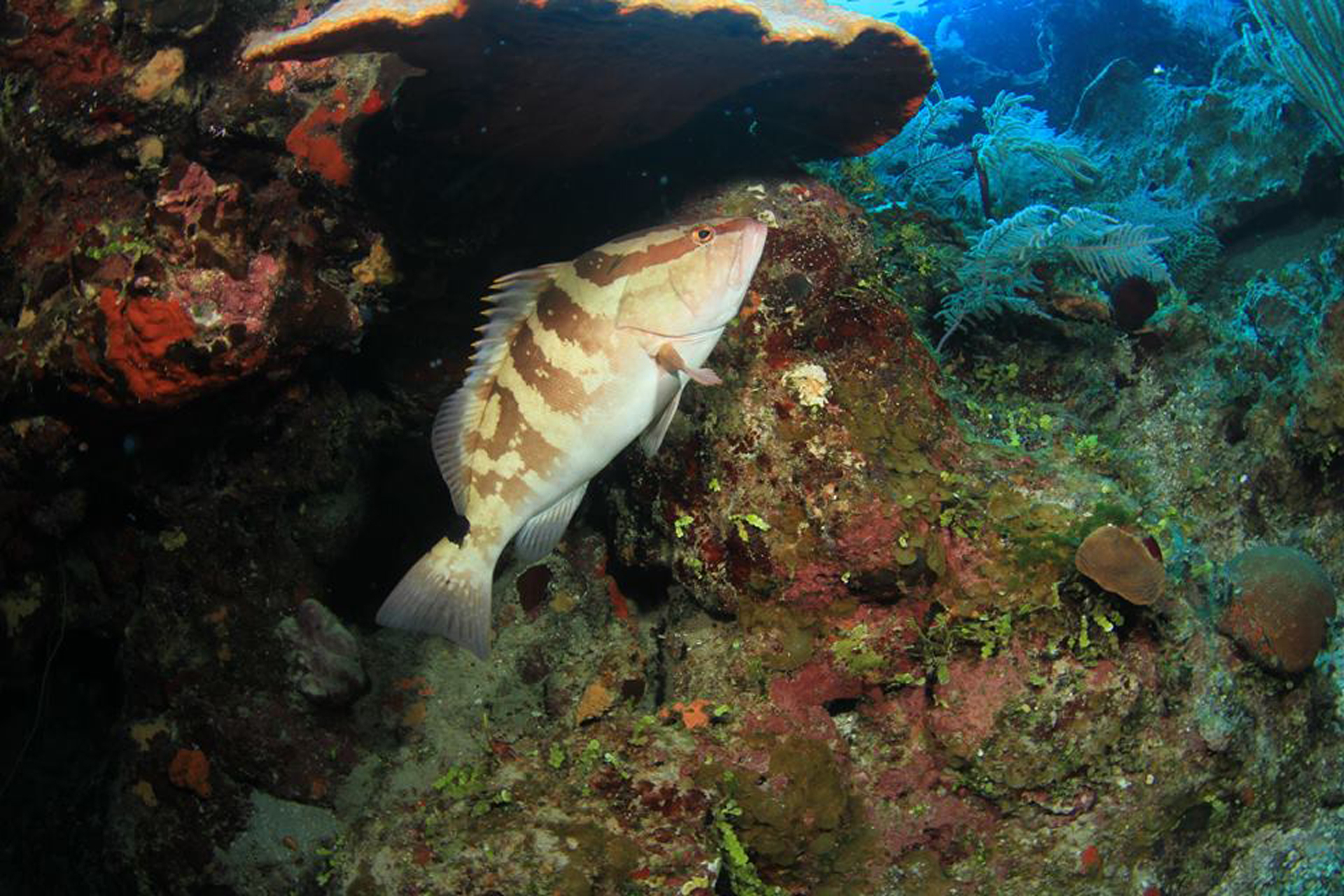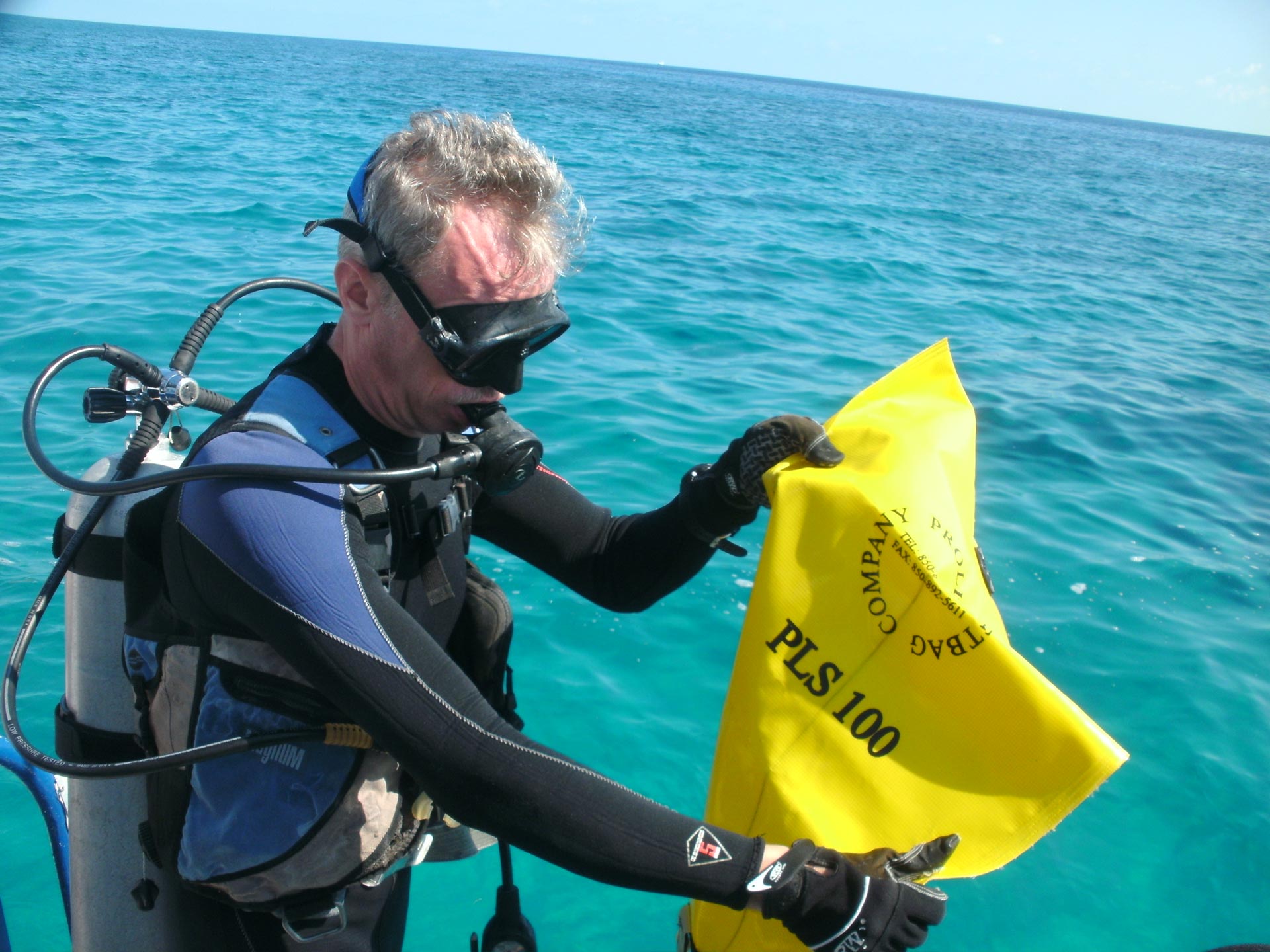How to catch a predator
The Nassau grouper is one of the top predators in reef habitats. It preys on reef fishes and invertebrates and in doing so helps to maintain the trophic structure. Outside the species’ winter spawning season, individual Nassau groupers are normally solitary, which makes it more challenging to catch them. However, we’ve come up with methods to capture and release these important reef predators during the non-spawning as well as the spawning seasons.

Nassau Grouper. Photo © Malcolm Goodman
During the non-spawning season we collect Nassau groupers while scuba-diving in relatively shallow water (up to about 60 feet, or 18 metres). A team of us, equipped with hand-held nets, anaesthetic-filled squirt bottles, tickle sticks, mesh bags, flashlights and tank bangers, fan out across the reef or a hard-bottom habitat. A diver who spots a grouper will point to it and alert other members of the team using the tank banger. We position ourselves strategically around the fish, using our nets to direct it into a hole. We block all visible exits with the nets and signal our readiness to begin the collecting process. The diver who has eyes on the fish then squirts a small amount of anaesthetic into the hole. When the fish is lightly sedated, we manoeuvre it into a waiting net and it is then transferred into a mesh bag to free up the net for the next catch (time permitting).

Dive team preparing to catch a Nassau grouper. Photo © Gabriel Hudson
During the winter spawning season we use traps or fish pots to catch the groupers because this is when adults migrate from reef habitats to spawning sites to reproduce. Spawning sites are often deep (more than 90 feet, or 27 metres) and are occupied by hundreds to thousands of groupers, which makes it much easier to catch a lot of them in a short time. Baited traps are lowered to the bottom and allowed to ‘soak’ underwater for several hours. Then we scuba-dive down to check the traps and if one contains a fish it is slowly brought to the surface in a lift bag.

Keith Pamper holding up a light bag that we use to bring traps to the surface. Photo © Krista Sherman
Our research is conducted off the Shedd Aquarium’s live-aboard research vessel, the R/V Coral Reef II. There is a live-well system on board, which ensures that the groupers can be processed without coming to any harm. Processing involves collecting fin clips and blood samples, taking length and weight measurements, and tagging. After the grouper has recovered, a diver escorts it back to the site it was collected from.
Video: Krista releasing a Nassau grouper after it has been processed. © Kristine Stump
We recently completed our winter spawning aggregation cruises and used baited traps to catch more Nassau groupers.
Follow us via Facebook and Instagram at NassauGrouper242 for research updates!
